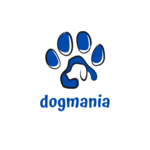Grain-Free vs. Traditional Dog Food: What's the Difference?
Choosing the right dog food is a critical decision for pet owners, as it directly impacts their furry friend’s health and well-being. With an array of options available, two popular categories often debated are grain-free and traditional dog food. Understanding the differences between these options can help you make an informed decision that best suits your dog's dietary needs. This comprehensive guide will explore the distinctions, benefits, and potential drawbacks of grain-free versus traditional dog food.
Understanding Grain-Free Dog Food
Grain-free dog food excludes grains like wheat, corn, and rice, which are common in traditional dog food. Instead, it relies on alternative carbohydrate sources such as potatoes, peas, and lentils. This type of diet is inspired by the idea that dogs, being descendants of wolves, thrive better on a diet closer to what their wild ancestors ate—primarily meat and vegetables.
Benefits of Grain-Free Dog Food
1. Digestive Health: Many dogs experience sensitivities or allergies to grains, leading to digestive problems such as bloating, gas, and diarrhea. Grain-free diets can alleviate these issues, promoting better gut health.
2. High Protein Content: Grain-free dog foods often have higher protein levels, which support muscle development, energy levels, and overall vitality. This is particularly beneficial for active and working dogs.
3. Skin and Coat Health: Dogs with grain allergies might suffer from skin irritations or a dull coat. Grain-free foods, rich in omega-3 and omega-6 fatty acids, can enhance skin health and result in a shinier, healthier coat.
4. Weight Management: Grain-free options can help control weight by reducing the intake of high-carb grains. This is especially useful for dogs prone to obesity or those needing to maintain a healthy weight.
5. Energy Boost: The high-quality proteins and fats in grain-free dog food provide sustained energy, making dogs more active and playful.
Potential Drawbacks of Grain-Free Dog Food
1. Nutritional Imbalance: Not all grain-free dog foods are nutritionally balanced. Some may lack essential vitamins and minerals or use low-quality fillers that do not offer significant nutritional benefits.
2. Cost: Grain-free dog foods are typically more expensive than their traditional counterparts due to the higher quality of ingredients.
3. Health Concerns: The FDA has been investigating potential links between grain-free diets and canine dilated cardiomyopathy (DCM), a heart condition. While the evidence is not conclusive, it’s a consideration to keep in mind.
Understanding Traditional Dog Food
Traditional dog food includes grains such as wheat, corn, barley, and rice. These grains are common carbohydrate sources and provide a balanced nutritional profile when combined with other essential ingredients.
Benefits of Traditional Dog Food
1. Balanced Nutrition: High-quality traditional dog foods are formulated to provide a balanced diet, including necessary proteins, carbohydrates, fats, vitamins, and minerals.
2. Affordability: Traditional dog food is generally more affordable than grain-free options, making it accessible to a wider range of pet owners.
3. Variety: There is a vast selection of traditional dog foods available, catering to various dietary needs, life stages, and breed-specific requirements.
4. Heart Health: Unlike grain-free foods, traditional dog foods have not been linked to any significant health concerns like DCM, making them a safer choice for many dogs.
Potential Drawbacks of Traditional Dog Food
1. Grain Allergies and Sensitivities: Some dogs are allergic or sensitive to grains, which can lead to digestive issues, skin problems, and other health concerns.
2. Lower Protein Content: Compared to grain-free options, traditional dog foods might have lower protein levels, which may not be ideal for highly active or working dogs.
3. Fillers and Additives: Some lower-quality traditional dog foods contain fillers, artificial preservatives, and by-products, which can detract from the overall nutritional value.
Comparing Grain-Free and Traditional Dog Food
When comparing grain-free and traditional dog food, it's essential to consider your dog's specific needs and health conditions. Here’s a breakdown of key factors to help guide your decision:
Ingredients
- Grain-Free: Primarily includes meat, vegetables, and alternative carbohydrates like potatoes and peas. It often has higher protein content.
- Traditional: Includes grains alongside meat and vegetables. It provides a balanced mix of essential nutrients.
Digestibility
- Grain-Free: May be easier to digest for dogs with grain sensitivities or allergies.
- Traditional: Generally well-tolerated by most dogs, but can cause issues in those with specific grain allergies.
Nutritional Content
- Grain-Free: Often rich in protein and fats, suitable for active dogs needing more energy.
- Traditional: Provides a balanced diet with a mix of proteins, carbohydrates, fats, vitamins, and minerals.
Cost
- Grain-Free: Typically more expensive due to higher quality ingredients.
- Traditional: More affordable and widely available.
Health Concerns
- Grain-Free: Potential link to DCM, though evidence is inconclusive. Important to monitor and consult with a veterinarian.
- Traditional: No significant health concerns linked to grains, making it a safe choice for many dogs.
conclusion
Choosing between grain-free and traditional dog food depends on your dog's individual health needs, dietary preferences, and your budget. Grain-free dog food can offer benefits for dogs with specific sensitivities or those requiring higher protein diets. Traditional dog food provides a balanced and affordable option suitable for most dogs. Always consult with your veterinarian before making significant changes to your dog's diet to ensure it meets their nutritional requirements and promotes their overall well-being. By understanding the differences, you can make an informed decision that supports your furry friend's health and happiness.



leave me your thoughts here